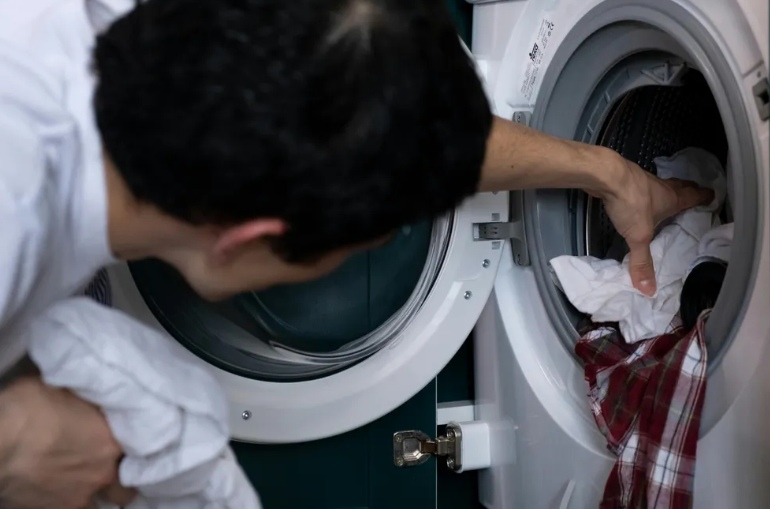The Republican candidate has won at least 277 Electoral College votes, per The Associated Press.

Donald Trump has been elected to return to the White House as the 47th United States president.
The vote was called for the Republican candidate by The Associated Press news agency early on Wednesday. His victory has been met by international congratulations but is likely to add further uncertainty to a turbulent geopolitical situation.
Results showed Trump beating Vice President Kamala Harris in a race far less tight than expected as he triumphed in key battleground states.
Victory in Wisconsin after earlier triumphs in Georgia, North Carolina and Pennsylvania saw the former president clear the threshold of the 270 Electoral College votes required to clinch the White House in Tuesday’s election.
Trump’s victory in those swing states currently sees him with 277 electoral votes against 224 for Harris. Polls had predicted a much tighter race, but it appears that anger fuelled the Republican’s remarkable comeback from defeat in 2020 and widespread condemnation of his refusal to accept the result.
That refusal sparked a violent insurrection at the US Capitol, and Trump was also convicted of felony charges and survived two assassination attempts.
However, his campaign, which has seen him demonise his political opponents, immigrants and many minorities, tapped into the frustrations of many voters in a bitterly polarised nation.
Speaking to his supporters as he declared victory, Trump claimed he had won “an unprecedented and powerful mandate”.
Anger and resentment
Scott Lucas, a professor of international politics at the University of Dublin, told Al Jazeera that Trump’s victory stemmed from frustrations that have been bubbling within the US public for years.
“There is anger and resentment in the US, which has been there for quite some time. It’s been a trauma since 9/11. It’s been there with the financial crash in 2008-2009. It was there in 2016 when Trump exploited it, and he exploited it again,” Lucas said, adding that Trump was able to do that because the “political system is damaged”.
Concern over the economy, and inflation in particular, under President Joe Biden was a major focus of the campaign.
That also encouraged opposition to the support Washington is giving to Ukraine in its war against Russia. Meanwhile, the failure to rein in Israel’s wars on Gaza and Lebanon has angered Muslim and liberal voters.
Those complex geopolitical issues will test Trump, who is known for his simplistic claims of being capable of quickly solving such issues.
He has promised to end the war in Ukraine in a day, an idea that has Kyiv wary that it could face pressure to strike a deal to hand over territory to Russia. NATO allies, meanwhile, fear Trump will weaken the alliance’s mutual defence guarantees.
Trump is also a strong supporter of Israeli Prime Minister Benjamin Netanyahu and has boasted he will end the war with Hamas in Gaza in hours.
“Your historic return to the White House offers a new beginning for America and a powerful recommitment to the great alliance between Israel and America. This is a huge victory!” Netanyahu said in a statement after Trump declared victory.
The enthusiasm in Israel also stems from the incoming president’s hawkish approach to Iran, which he is likely to reassert.
China is also braced for a more confrontational relationship with the US under Trump, who is expected to revive staunchly nationalistic trade policies, putting both allies and rivals on edge.
‘Much more dangerous era’
However, at home, supporters will look to Trump to put the focus on the welfare of US citizens while following through on promises to enact an agenda that would transform nearly every aspect of American government.
That will include plans to launch the largest deportation effort in the nation’s history and use the Department of Justice to punish his enemies.
The result is that “we are going into a much more dangerous era for Americans and for the world because this will not be a coherent US policy for America but one pursued for Trump,” Lucas said.
My Husband Always Left the House When His Phone Rang & Returned with Smelly Clothes

When James, my husband, started leaving the house in a rush, I was sure something sinister was happening. He did this several times without a clear explanation. His strange behavior had me thinking he might be ch_eating, as he refused to tell me the real truth. When I finally found out the truth of what he was doing, I was shaken to my core!
For ten years of our marriage, I thought I knew everything about him. But MAN, was I mistaken! What I believed I knew about him was that he was driven and successful. He always seemed so tough, almost impenetrable
For all the time James and I had been together, I’d never seen him cry! But I never doubted his love for me; I could simply feel it in his actions, even if he didn’t say it often. That was until the last few months when things started to change.
My husband began acting differently. He was rarely home, spent no time with the children, and every time his phone rang, he would immediately leave.
When I confronted him about the calls and the rushed departures, he made a claim I couldn’t fathom. “It’s urgent office work, my love.” I didn’t believe him at all, mainly due to the next thing I am about to share.
What had me doubting him was the oddest part of all this. My husband would come back home and IMMEDIATELY throw his clothes in the washing machine! His clothes were washed even if he’d only worn them that day for roughly an hour!

After that, James would take a shower, no matter how briefly he’d been gone. It was perplexing and, frankly, worrisome! No matter how I tried to get him to tell me the truth about what he was actually doing, James would stick to the work excuse.
I once snuck to the washing machine during his shower time. Doing my own investigations I pulled out his clothes to smell them for women’s perfume. Instead, I was hit with a stench I couldn’t explain! His clothes smelled PUTRID!
That evening, after my husband left in a hurry once again, I made a decision that I couldn’t take it anymore and was fed up. I needed to know what was going on! I grabbed my coat and tracked him down, following him to his destination.
My heart pounded as I trailed his car through the winding streets. He finally came to a halt when he parked in front of an old, run-down building on the edge of town.
I even wondered whether it was safe to go in or not and hesitated for a while before summoning the courage to enter. But what I witnessed inside left me SPEECHLESS!
I saw him with a bunch of people and they were doing something I couldn’t even comprehend as I stood there with my mouth open. James, my stoic, seemingly indifferent husband, was there in an APRON! MY man was serving food to a group of homeless people!

He was smiling, chatting, and laughing, a side of him I had NEVER seen before! It was like watching a stranger, but one who looked so much like the man I married! As if sensing my presence, James looked up, and our eyes met.
He froze, his face a mask of fear and surprise. My husband then quickly made his way over to me, taking off his apron as he walked. “Lily, I can explain,” he said, his voice trembling slightly. “Please do,” I replied, trying to keep my voice steady.
“What is all this? Why didn’t you tell me?” James took a deep breath, leading me to a quieter corner. “This is my project, the one I live for.” I watched him, waiting for the revelation that was about to change everything I thought I knew about my husband.
“I was born in poverty,” he began. “Sometimes, my family had nothing to eat. My single mom couldn’t feed me and my brother, so she gave us up for adoption,” James said. “We were taken in by a wealthy family who gave us everything we needed.”
I was shocked that I’d never known this about him. “But there was a catch. My new dad was strict; he believed in toughness and never showing vulnerability,” my husband continued. “I had to bury my soft side deep inside just to survive in that house because my adopted father forbade me from showing it.”
“He’s the one who taught me to be tough and determined, hence my work ethic.” Tears welled up in my eyes as I listened. This was a side of James I never knew, a past he had never shared. “So, you started this to show your true self?” I asked, my voice breaking.
“Yes,” he said, his eyes reflecting a mixture of pain and relief. “When I became successful, I realized I needed to find a way to express my soft side somewhere. I wanted to give back somehow.”
“I wanted to help people who are in the same position I once was.”
“So, I started this shelter, this kitchen, as my way of giving back and being true to who I am. It’s a part of me I’ve hidden for so long.” He explained how he started feeding poor and homeless people and sheltering them too.
What he did hit me hard, the weight of his hidden life pressing down on me. I understood now why he had been so secretive, why he NEEDED this outlet. It wasn’t just about work; it was about redemption and compassion.
I took his hand in mine. “James, you should have told me. We could have done this together.” He squeezed my hand, a tear slipping down his cheek. At that moment, I fell deeper in love with him, realizing that he was human too.
I saw a side of him that made me see that he was a multifaceted being. “I was scared, Lily. Scared of what you might think, scared of appearing weak.”
“You’re not weak, my darling,” I said firmly. “Showing your soft side, helping these people, that’s the STRONGEST thing you can do!”
Since then, our relationship changed. I finally understood why he was secretive and washed his clothes after every trip. I joined James in his mission. I started volunteering at the shelter and bringing the children along too.

They learned the value of kindness and humility, and at the same time saw their father in a new light! We grew closer than ever, united by his hidden passion and newfound openness. My husband showed me that true strength lies in being able to show your vulnerability.
I also learned through him that inner strength lay in giving WITHOUT expecting anything in return. The act of giving was a gift of its own. Our family became stronger, bound by love. We were united by his formerly hidden compassion, newfound openness, and a shared commitment to helping others.
Luckily for Lily, her husband wasn’t doing anything wrong on his random trips.



Leave a Reply